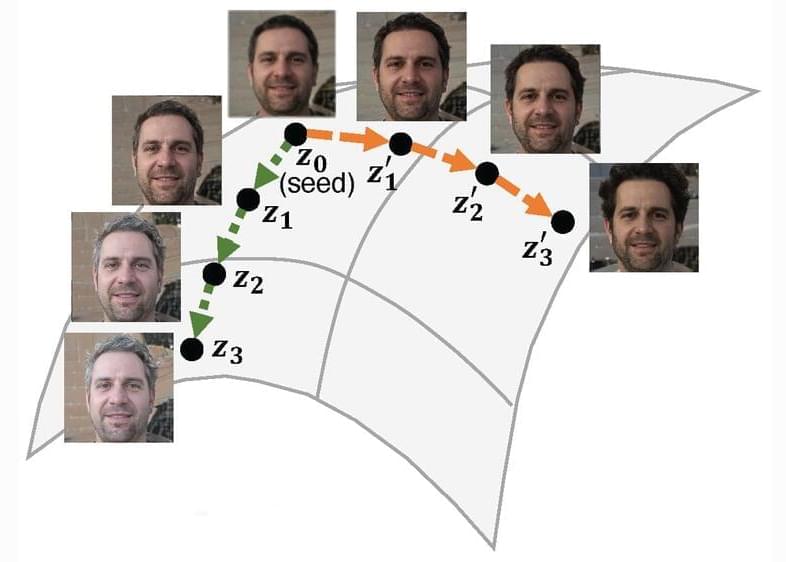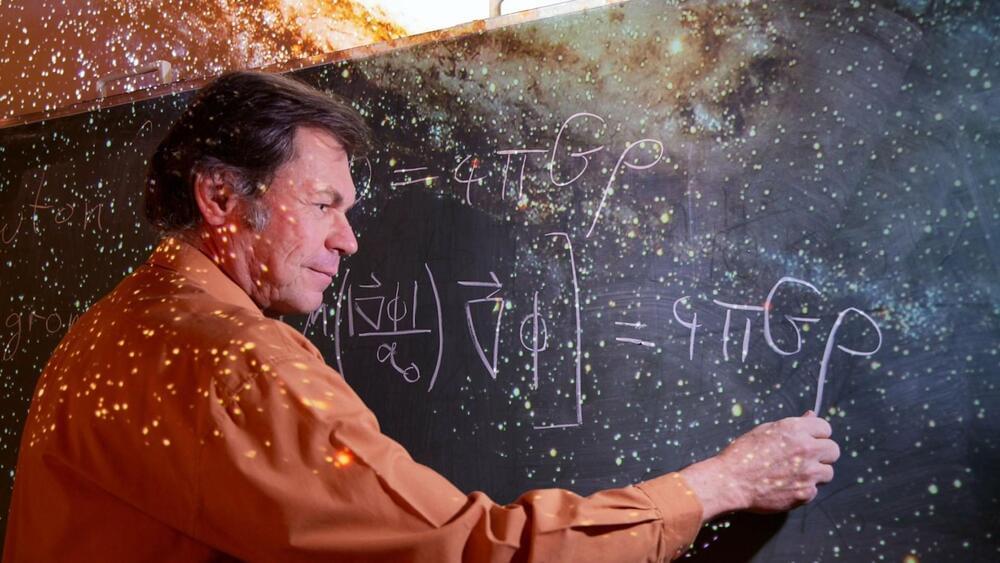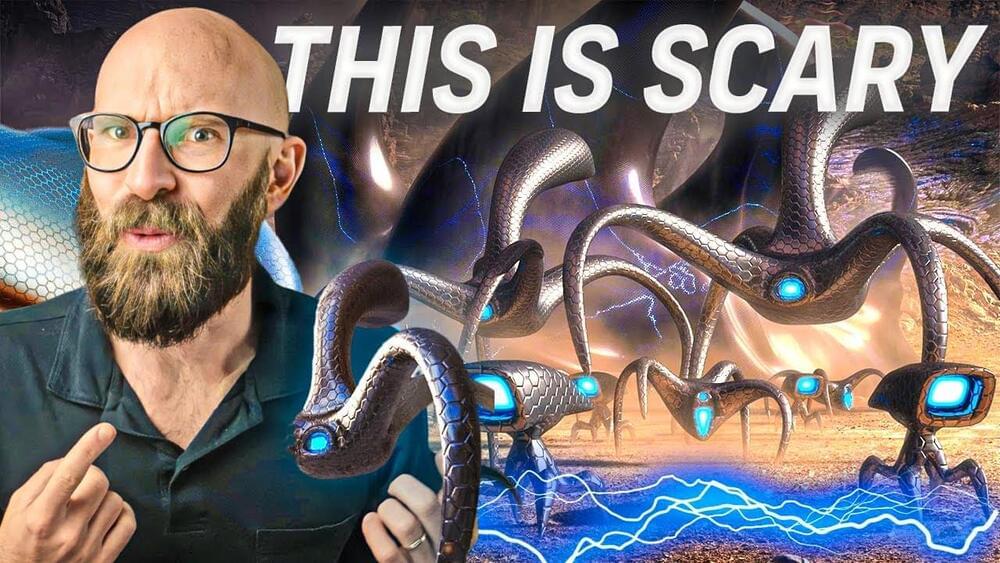By plotting nonlinear trajectories through a GAN’s latent space, the method enables certain image attributes to vary while others are held fixed.
The observations could not be explained by Newton’s law of universal gravitation. An alternative theory of gravity might provide the answer. Astrophysicists observed mysterious behavior in star clusters that could lead to a rewrite of fundamental principles of the theory of gravity and even disprove the existence of dark matter, a press release explains.
The new findings challenge existing preconceptions based on widely-accepted principles from Newton’s law of universal gravitation, which explain the large-scale structure and movements of the universe.
China is the first country to operate a space station on its own.
China is one step closer to completing its space station after it launched the third and final module to orbit aboard a Long March 5B rocket, a Bloomberg report.
The rocket took off from Wenchang Satellite Launch Center on Hainan Island at 3:37 p.m. local time Monday, October 31. The payload it lifted to orbit is the Mengtian laboratory module, which will complete China’s orbital station. rocket took off from Wenchang Satellite Launch Center on Hainan Island at 3:37 p.m. local time Monday, October 31. The payload it lifted to orbit is the Mengtian laboratory module, which will complete China’s orbital station.
Twitter acquired the video-sharing service in 2012 but shut it down four years later.
Elon Musk has told engineers at Twitter to work on a reboot of the short-video sharing service Vine, six years after it was shut down by the then CEO, Jack Dorsey, Business Insider.
After months of delay in acquiring the social media platform he believes has the potential to be the world’s town square, Elon Musk has wasted no time to ring in changes. After firing Twitter’s top brass, Musk is the only director of the company he now wholly owns and, as CEO is putting Twitter employees to the task.
Sunshine streaming through a window could be directly harnessed for wireless data transmission to electronic devices. KAUST researchers have designed a smart glass system that can modulate the sunlight passing through it, encoding data into the light that can be detected and decoded by devices in the room. The use of sunlight to send data would offer a greener mode of communication compared to conventional Wi-Fi or cellular data transmission.
Basem Shihada had been exploring data encoding into an artificial light source when he had the lightbulb moment to use sunshine. “I was simply hoping to use a cell phone camera to record a video of the encoded light stream to try to decode the video to retrieve the data; that’s when I thought, why not do the same with the sunlight?” Shihada recalls. “This would be much easier and can be done over the cell phone camera too. So we began to explore sunlight as an information carrier,” he says.
The team has now designed a sunlight communication system comprised of two parts. “There is a light modulator that can be embedded in a glass surface and an in-room receiver,” says Osama Amin, a research scientist in Shihada’s labs.
Our solar system is just a small slice of the universe. From the depth that James Webb’s first images have provided, to the journeys that Voyager 1 and Voyager 2 have taken into interstellar space, our universe is much bigger beyond our solar system’s edge.
Why the Pillars of Creation has fascinated the public since 1995.
The Pillars of Creation was an image special enough to be featured on a U.S. postage stamp to commemorate the Hubble Space Telescope and its namesake, astrophysicist Rogier Windhorst tells Inverse.
Here is a guide to the stunning Pillars of Creation and why one space telescope veteran stands by the scene’s remarkability.
Windhorst has been an interdisciplinary scientist for the James Webb Space Telescope (JWST) since 2002. The Pillars of Creation were first observed from the ground, he says, but JWST’s predecessor, Hubble, catapulted the region to fame when it imaged this pocket of the much-larger Eagle Nebula back in 1995. And JWST viewed the region last month, providing two incredible new views of its celestial spires.
The project, known as DAF-MIT AI Accelerator, selected a pilot out of over 1,400 applicants.
The United States Air Force (DAF) and Massachusetts Institute of Technology (MIT) commissioned their lead AI pilot — a training program that uses artificial intelligence — in October 2022. The project utilizes the expertise at MIT and the Department of Air Force to research the potential of applying AI algorithms to advance the DAF and security.
The military department and the university created an artificial intelligence project called the Department of the Air Force-Massachusetts Institute of Technology Artificial Intelligence Accelerator (DAF-MIT AI Accelerator).
Full Story:
The project and the pilot
A prototype of the project was signed with an executive order in 2019, and it had various strategies put into place in 2020. The collective team, known as the DAF-MIT AI Accelerator, commissioned their lead AI pilot last month. “In this pilot, [the cohort] will gain a practical grounding in AI and its business applications helping you transform your organizations into the workforce of the future,” said Major John Radovan, deputy director of the AIA.
Software upgrades could help resolve the issue.
A collaboration of researchers from the U.S. and Japan has demonstrated that a laser attack could be used to blind autonomous cars and delete pedestrians from their view, endangering those in its path, according to a press release.
Autonomous or self-driving cars rely on a spinning type of radar system called LIDAR that helps the vehicle sense its surroundings. Short for Light Detection and Ranging, the system emits laser lights and then captures its reflections to determine the distances between itself and the obstacles in its path.
Most advanced autonomous cars today rely on this system to steer through obstacles in their path. However, the collaboration of researchers from the University of Florida, the University of Michigan, and the University of Electro-Communications in Japan showed the system can be tricked with a fairly basic laser setup.








